Energy-Efficient Hardware Implementation of an LR-Aided K-Best MIMO Decoder for 5G Networks
Abstract
:1. Introduction
2. Sphere Decoding and the K-Best Algorithm
- Initialize the first layer ;
- Find the PEDs of all expanded nodes at layer and select the K minimum PEDs;
- Expand the surviving nodes to their children and set ;
- If go to step 2, otherwise continue;
- Select the path with the lowest PEDs as the solution.
3. LR-Aided K-Best Decoder
4. System Architecture Design and Verification
4.1. Software Implementation and Evaluation
4.2. Hardware Architecture
- The QR block decomposes the input H matrix into an orthonormal matrix Q and an upper triangular matrix R. The precision of the QR decomposition has a considerable effect on the performance of the symbol detection. Low-quality QR decomposition directly causes a bit error rate, especially in systems with large numbers of antennas and/or large signal constellation size. There are three common-used algorithms for the QR decomposition including Gram-Schmidt, householder reflections and given rotations. Among these, the given rotation method offer the best performance-hardware cost tradeoff. In this work, given rotations algorithm is chosen for QR decomposition.
- The LLL block implements the Lenstra–Lenstra–Lovász algorithm to compute the T matrix from Q and R matrixes. The CORDIC algorithm is used to implement all square root functions as it replaces multiplications with add and shift operations, which greatly simplifies the hardware.
- The MULT_1 block multiplies the T matrix with the H matrix to produce the orthogonal matrix.
- The shift and scale block implements Equations (5) and (6) in order to extend the matrix for the received signal Y for the benefits of the following MIMO detection stage.
- The functionality of the MLD block is to detect z as described in Section 3, as . To achieve this it needs to perform the search process described in Equation (7) using a breadth-first K-Best algorithm
5. Evaluation of Energy Costs of MIMO Detectors
a) Power Consumption Estimation of MIMO Decoder
b) Estimation of Minimum Transmission Power Requirement
| S/N: | is the minimum signal to noise ratio required at the receiver. |
| RNF: | is a the receiver noise figure in dB, (e.g., for an ideal receiver (RNF = 0). |
| K: | is the Boltzmann constant. |
| T: | is the absolute temperature in K. |
| λ: | is the transmitted wavelength. |
| d: | is the distance between the transmitter and receiver |
| n: | is the path loss exponent which depends on the environment (e.g., for free space (n = 2)). |
6. VLSI Design and Comparative Analysis
7. Conclusions
Author Contributions
Conflicts of Interest
References
- Obaidat, M.; Anpalagan, A.; Woungang, I. Handbook of Green Information and Communication Systems; Elsevier Academic Press: Amsterdam, the Netherlands, 2012. [Google Scholar]
- Hu, C.S.; Gong, J.; Wang, X.L.; Zhou, S.; Niu, Z.S. Optimal Green Energy Utilization in MIMO Systems with Hybrid Energy Supplies. IEEE Trans. Veh. Technol. 2015, 64, 3675–3688. [Google Scholar] [CrossRef]
- EARTH Project. Available online: http://www.ict-earth.eu/ (accessed on 8 April 2016).
- Greentouch Project. Available online: http://www.greentouch.org/ (accessed on 8 April 2016).
- Green Radio Project. Available online: http://mobilvce/green-radio/ (accessed on 8 April 2016).
- Xu, J.; Qiu, L. Energy Efficiency Optimization for MIMO Broadcast Channels. IEEE Trans. Wirel. Commun. 2013, 12, 690–701. [Google Scholar] [CrossRef]
- Qi, X.F.; Holt, K. A Lattice-Reduction-Aided Soft Demapper for High-Rate Coded MIMO-OFDM Systems. IEEE Signal Process. Lett. 2007, 14, 305–308. [Google Scholar] [CrossRef]
- Bello, I.A.; Halak, B.; El-Hajjar, M.; Zwolinski, M. A Survey of VLSI Implementations of Tree Search Algorithms for MIMO Detection. Circuits Syst. Signal Process. 2015, 1–31. [Google Scholar] [CrossRef]
- Zhan, G.; Nilsson, P. Algorithm and implementation of the K-best sphere decoding for MIMO detection. IEEE J. Sel. Areas Commun. 2006, 24, 491–503. [Google Scholar] [CrossRef]
- Fan, W.L.; Liu, Y.; Wang, Z.J.; Mao, X.Y. A new dynamic K-best SD algorithm for MIMO detection. In Proceedings of the 2014 Sixth International Conference on Wireless Communications and Signal Processing (WCSP), Hefei, China, 23–25 October 2014; pp. 1–5.
- Yao, H.; Wornell, G.W. Lattice-Reduction-Aided detectors for MIMO communication systems. In Proceedings of the Global Telecommunications Conference, 2002, GLOBECOM '02, Taipei, Taiwan, 17–21 November 2002; Volume 1, pp. 424–428.
- Halak, B.; El-Hajjar, M.; Hu, Q.; Lu, Y.; Li, Q.; Qiang, Y. Energy-Efficient adaptive MIMO decoders. In Proceedings of the Science and Information Conference (SAI), London, UK, 28–30 December 2015; pp. 1140–1143.
- Kim, T.H.; Park, I.C. Small-Area and Low-Energy Best MIMO Detector Using Relaxed Tree Expansion and Early Forwarding. IEEE Trans. Circuits Syst. I: Reg. Papers 2010, 57, 2753–2761. [Google Scholar] [CrossRef]
- Mondal, S.; Eltawil, A.; Shen, C.A.; Salama, K.N. Design and Implementation of a Sort-Free K-Best Sphere Decoder. IEEE Trans. Very Large Scale Integr. (VLSI) Syst. 2010, 18, 1497–1501. [Google Scholar] [CrossRef]
- Lenstra, A.K.; Lenstra, H.W., Jr.; Lovász, L. Factoring Polynomials with Rational Coefficients. Mathematische Annalen. 1982, 261, 515–534. [Google Scholar] [CrossRef]
- Silvola, P.; Hooli, K.; Juntti, M. Suboptimal soft-output MAP detector with lattice reduction. IEEE Signal Process. Lett. 2006, 13, 321–324. [Google Scholar] [CrossRef]
- Zhou, Q.; Ma, X.L. An improved LR-aided K-best algorithm for MIMO detection. In Proceedings of the 2012 International Conference on Wireless Communications & Signal Processing (WCSP), Huangshan, China, 25–27 October 2012; pp. 1–5.
- Viterbo, E.; Boutros, J. A universal lattice code decoder for fading channels. IEEE Trans. Inf. Theory 1999, 45, 1639–1642. [Google Scholar] [CrossRef]
- Howard, S.L.; Schlegel, C.; Iniewski, K. Error Control Coding in Low-Power Wireless Sensor Networks: When Is ECC Energy-Efficient? EURASIP J. Wirel. Communi. Netw. 2006. [Google Scholar] [CrossRef]
- Proakis, J. Digital Communications; McGraw Hill: New York, NY, USA, 2008. [Google Scholar]
- The 3rd Generation Partnership Project, 2016. Available online: http://www.3gpp.org/about-3gpp/about-3gpp (accessed on 8 April 2016).
- 5G Radio Access. Ericsson White paper Uen 284 23-3204 Rev B; Ericsson: Stockholm, Sweden, 2015. [Google Scholar]

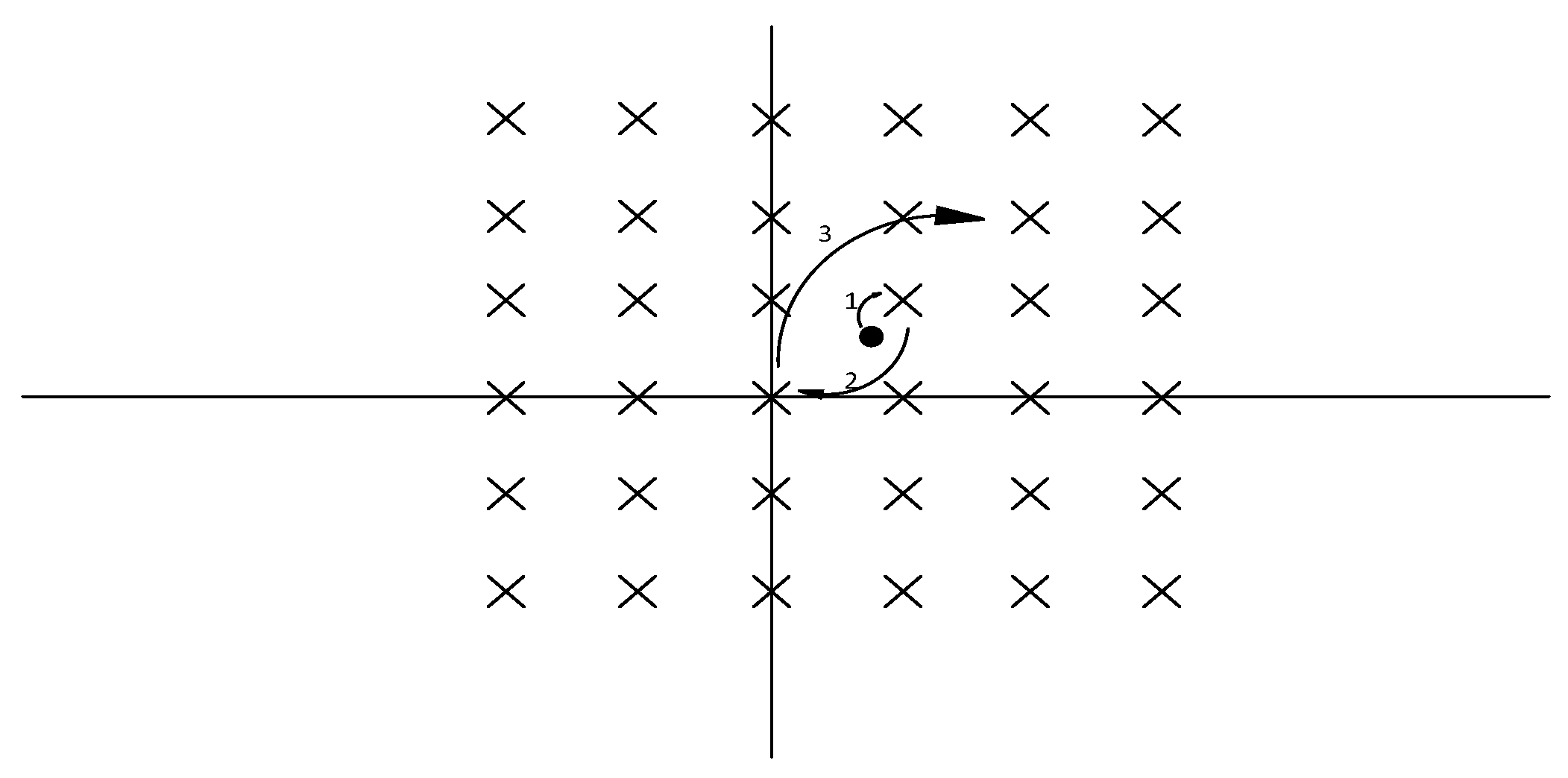
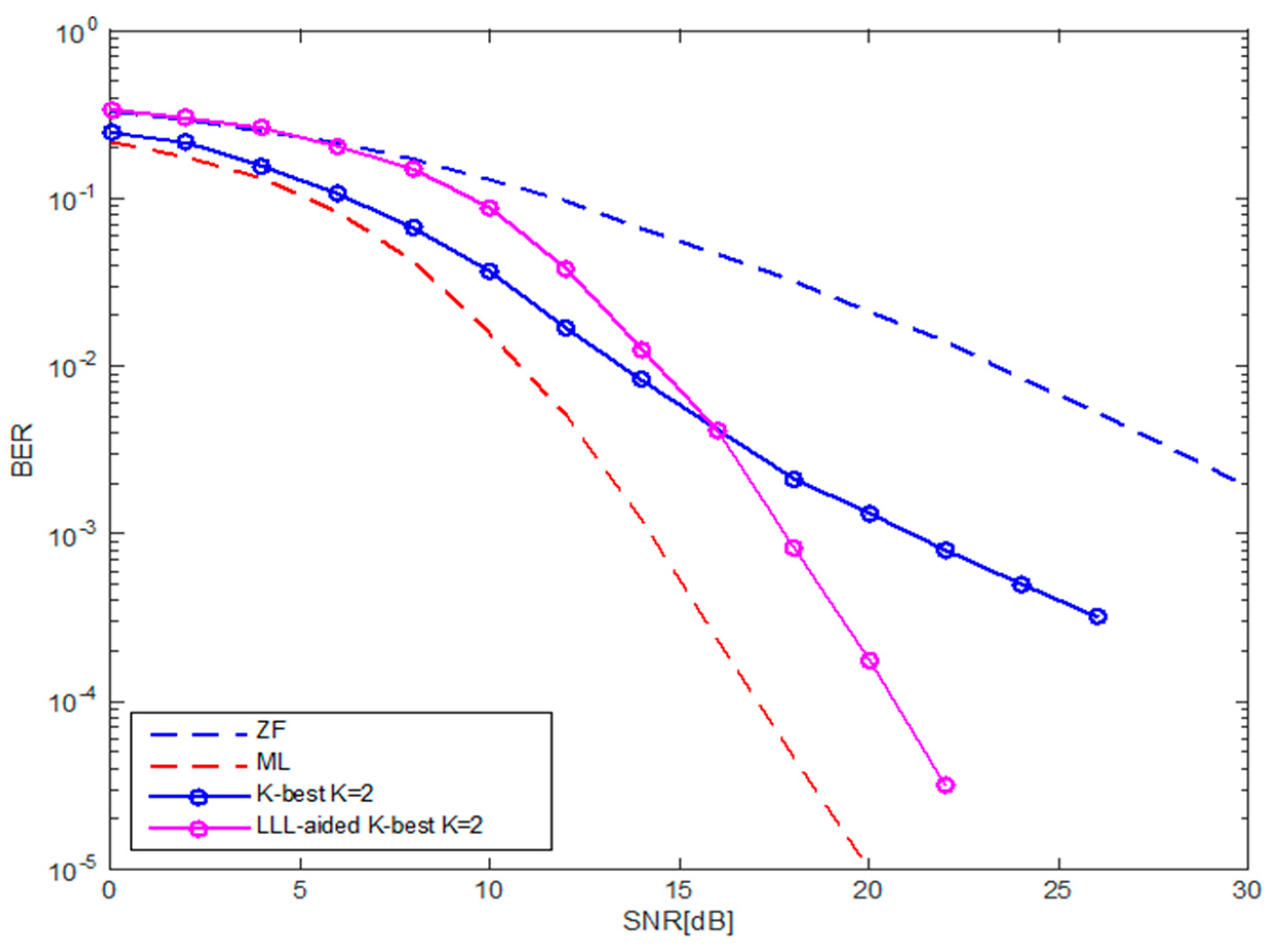

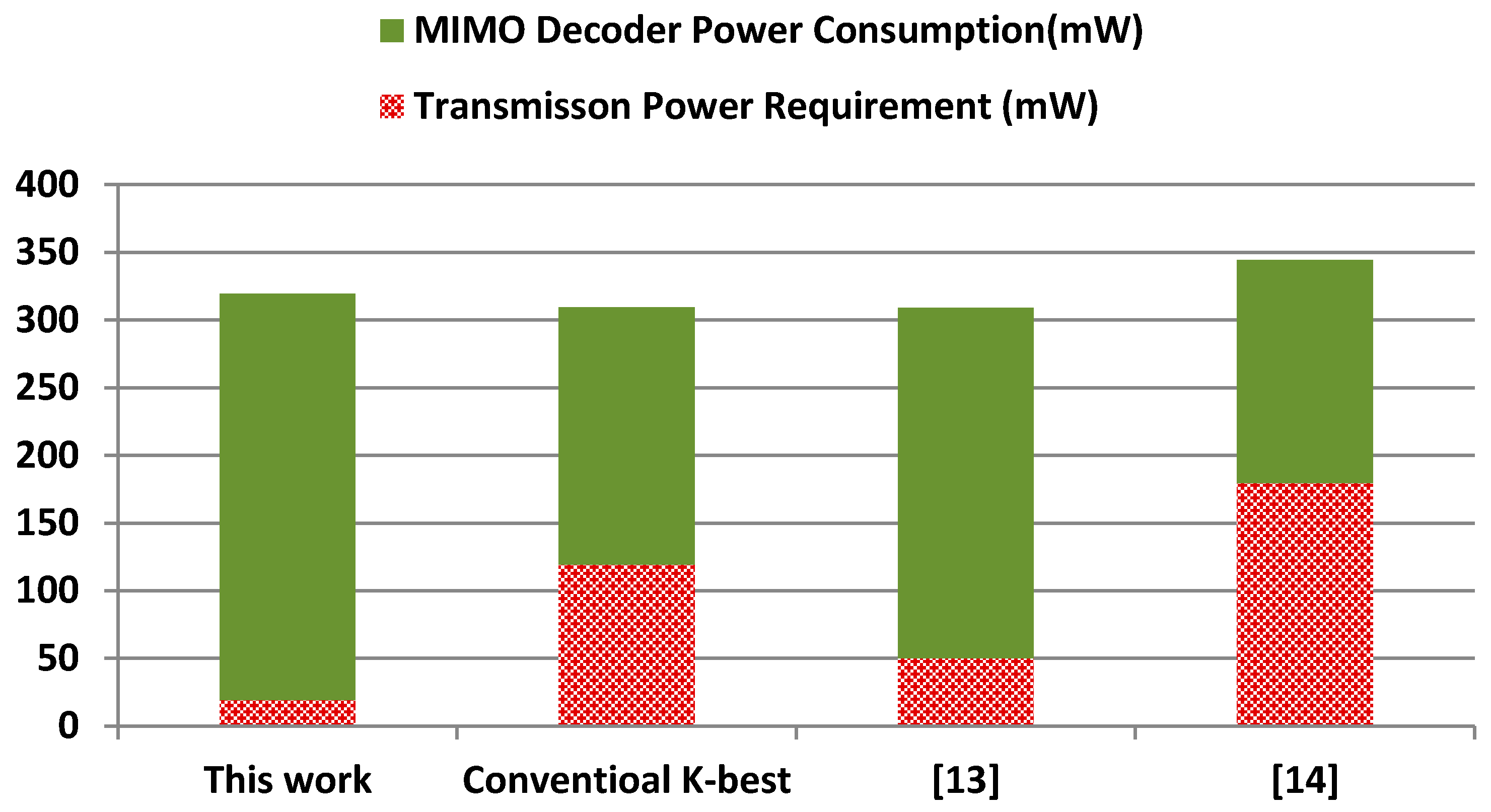
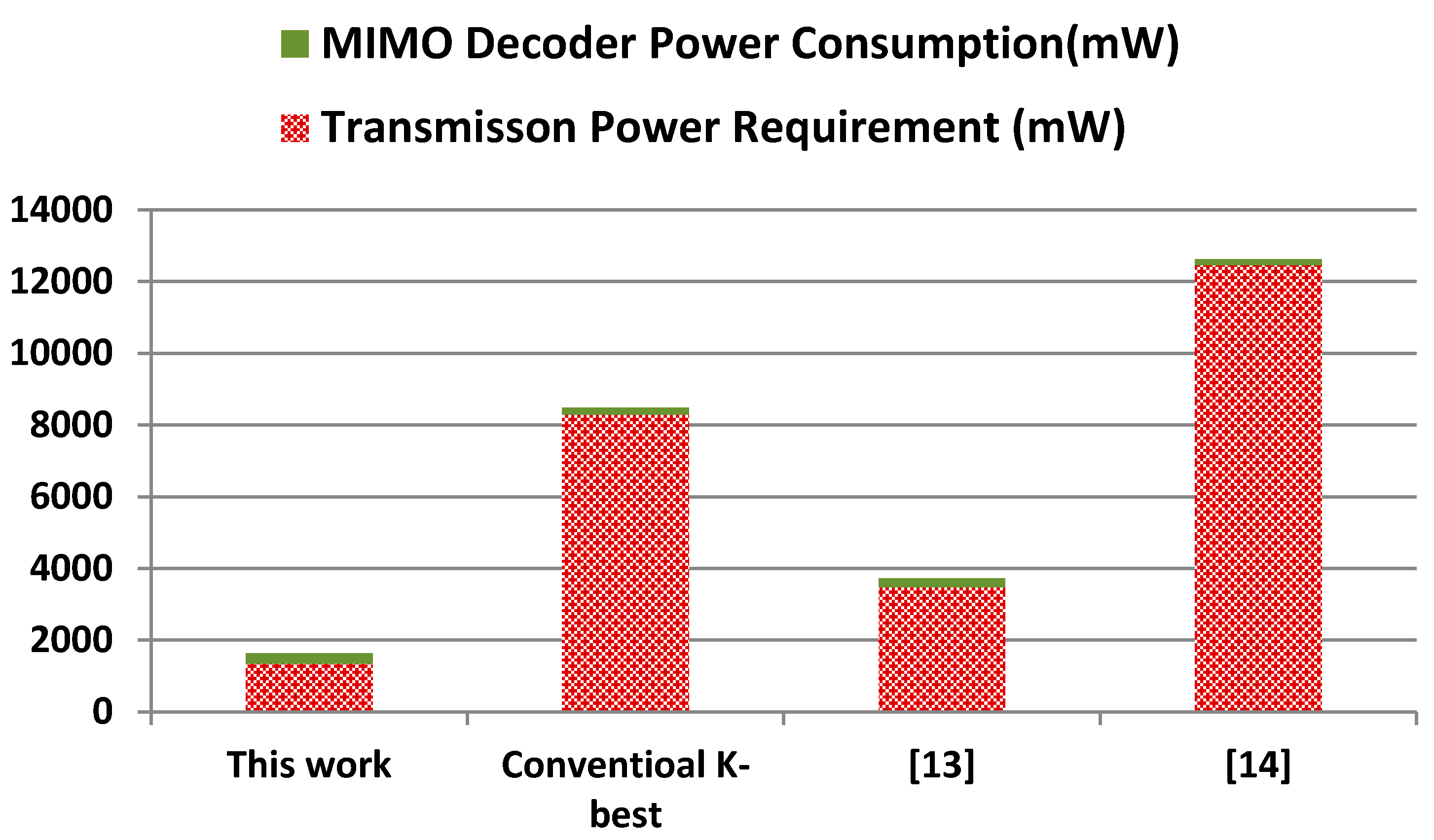
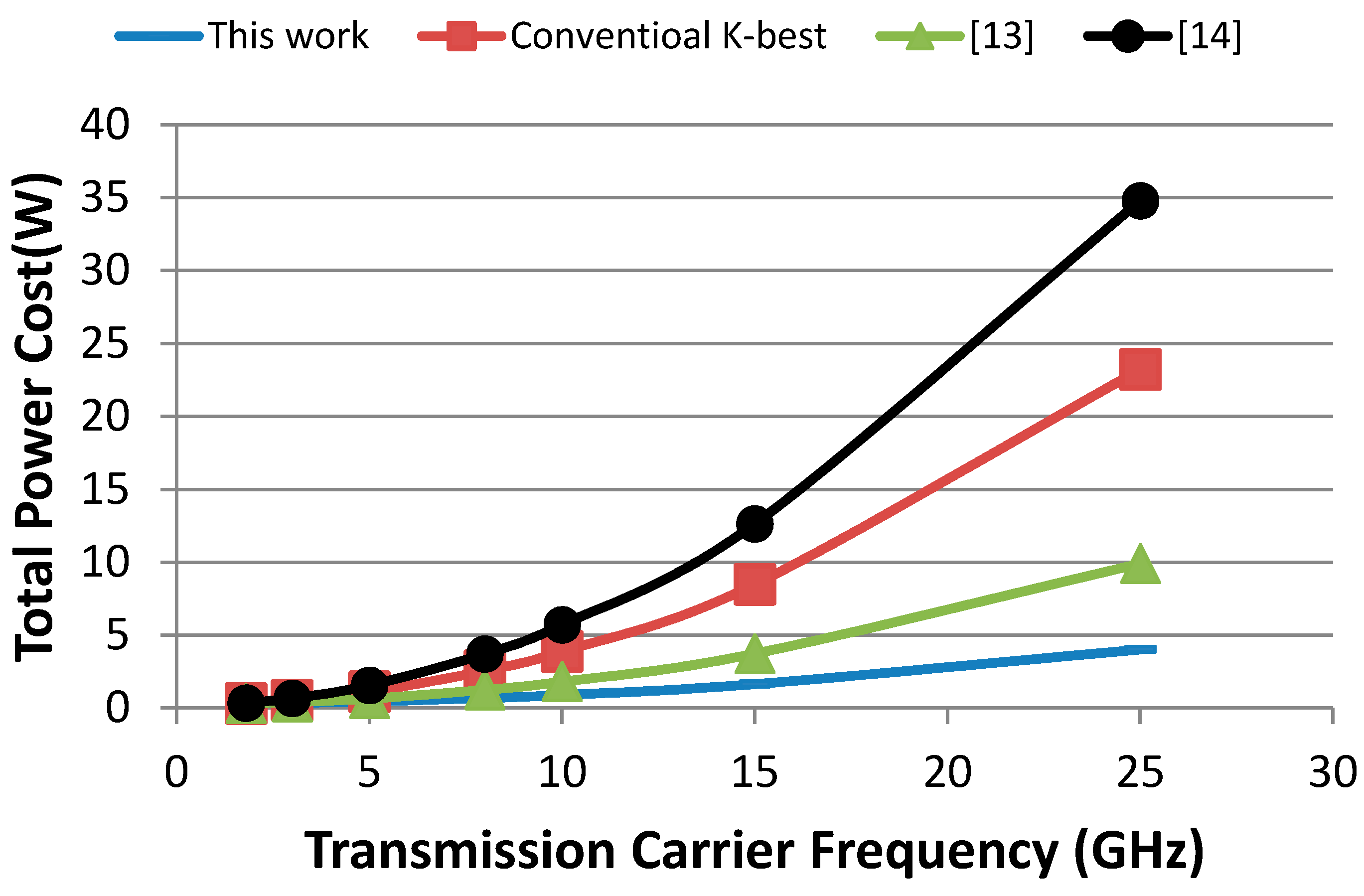
© 2016 by the authors; licensee MDPI, Basel, Switzerland. This article is an open access article distributed under the terms and conditions of the Creative Commons Attribution (CC-BY) license (http://creativecommons.org/licenses/by/4.0/).
Share and Cite
Halak, B.; El-Hajjar, M.; Toma, O.H.; Cheng, Z. Energy-Efficient Hardware Implementation of an LR-Aided K-Best MIMO Decoder for 5G Networks. J. Low Power Electron. Appl. 2016, 6, 12. https://doi.org/10.3390/jlpea6030012
Halak B, El-Hajjar M, Toma OH, Cheng Z. Energy-Efficient Hardware Implementation of an LR-Aided K-Best MIMO Decoder for 5G Networks. Journal of Low Power Electronics and Applications. 2016; 6(3):12. https://doi.org/10.3390/jlpea6030012
Chicago/Turabian StyleHalak, Basel, Mohammed El-Hajjar, Ogeen H. Toma, and Zhuofan Cheng. 2016. "Energy-Efficient Hardware Implementation of an LR-Aided K-Best MIMO Decoder for 5G Networks" Journal of Low Power Electronics and Applications 6, no. 3: 12. https://doi.org/10.3390/jlpea6030012
APA StyleHalak, B., El-Hajjar, M., Toma, O. H., & Cheng, Z. (2016). Energy-Efficient Hardware Implementation of an LR-Aided K-Best MIMO Decoder for 5G Networks. Journal of Low Power Electronics and Applications, 6(3), 12. https://doi.org/10.3390/jlpea6030012







